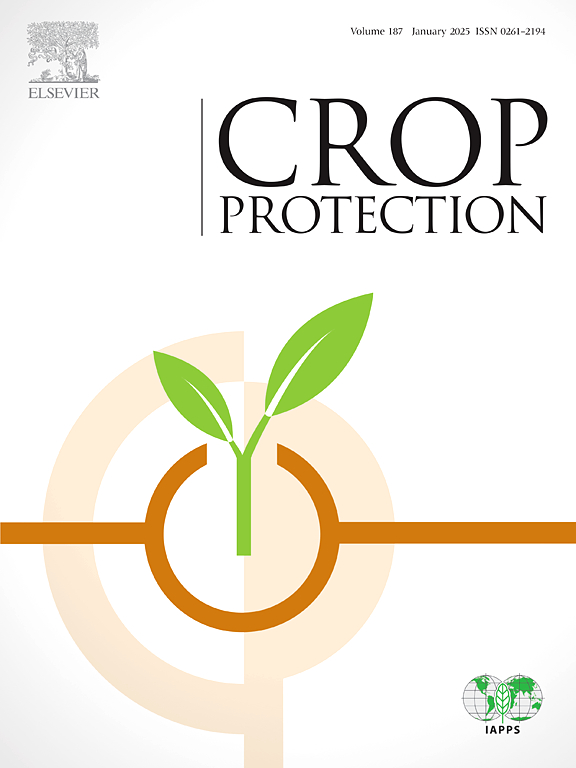Potential biopesticides from Datura alba and Calotropis gigantea: Extraction, analysis, and reported compounds
IF 2.5
2区 农林科学
Q1 AGRONOMY
引用次数: 0
Abstract
The growing demand for eco-friendly bio-based agrochemicals with lower health hazards and optimal pest management options boosts the production and utilization of biopesticides. This review provides a comprehensive overview of two toxic weed species Datura alba (Solanaceae family), and Calotropis gigantea (Asclepiadaceae family) with a specific focus on extraction with various solvents, phytochemistry, and biopesticidal activities. The data presented in this article shows that these two toxic weeds species have been studied and reported for biopesticidal activities like antifeedant, ovicidal, insecticidal, larvicidal, antibacterial, and repelling ability against various insects/crop pests. Phytochemical analysis shows that these two weed species have distinct biochemical profiles. However, studies lack systematic screening of the biochemical profiles. In addition, the review highlights the gaps in previous research and suggests that there is a need for well-detailed phytochemical profiling, spectrum of action and mode of action for the future use of these weed plants in the development of biological control agents.
曼陀罗和菖蒲中的潜在生物杀虫剂:提取、分析和报告的化合物
人们对健康危害较小的生态友好型生物农用化学品和最佳害虫管理方案的需求日益增长,推动了生物农药的生产和利用。本综述全面综述了两种有毒杂草曼陀罗(茄科)和金盏菊(菊科),重点介绍了各种溶剂的提取、植物化学和生物农药活性。本文提供的数据表明,这两种有毒杂草的生物杀虫活性已得到研究和报道,如抗飞虫、杀卵、杀虫、杀幼虫、抗菌和驱避各种昆虫/作物害虫的能力。植物化学分析显示,这两种杂草具有不同的生化特征。然而,相关研究缺乏对生化特征的系统筛选。此外,该综述还强调了以往研究中的不足,并建议今后在开发生物防治剂时需要对这些杂草植物进行详细的植物化学分析、作用谱和作用模式研究。
本文章由计算机程序翻译,如有差异,请以英文原文为准。
求助全文
约1分钟内获得全文
求助全文
来源期刊

Crop Protection
农林科学-农艺学
CiteScore
6.10
自引率
3.60%
发文量
200
审稿时长
29 days
期刊介绍:
The Editors of Crop Protection especially welcome papers describing an interdisciplinary approach showing how different control strategies can be integrated into practical pest management programs, covering high and low input agricultural systems worldwide. Crop Protection particularly emphasizes the practical aspects of control in the field and for protected crops, and includes work which may lead in the near future to more effective control. The journal does not duplicate the many existing excellent biological science journals, which deal mainly with the more fundamental aspects of plant pathology, applied zoology and weed science. Crop Protection covers all practical aspects of pest, disease and weed control, including the following topics:
-Abiotic damage-
Agronomic control methods-
Assessment of pest and disease damage-
Molecular methods for the detection and assessment of pests and diseases-
Biological control-
Biorational pesticides-
Control of animal pests of world crops-
Control of diseases of crop plants caused by microorganisms-
Control of weeds and integrated management-
Economic considerations-
Effects of plant growth regulators-
Environmental benefits of reduced pesticide use-
Environmental effects of pesticides-
Epidemiology of pests and diseases in relation to control-
GM Crops, and genetic engineering applications-
Importance and control of postharvest crop losses-
Integrated control-
Interrelationships and compatibility among different control strategies-
Invasive species as they relate to implications for crop protection-
Pesticide application methods-
Pest management-
Phytobiomes for pest and disease control-
Resistance management-
Sampling and monitoring schemes for diseases, nematodes, pests and weeds.
 求助内容:
求助内容: 应助结果提醒方式:
应助结果提醒方式:


